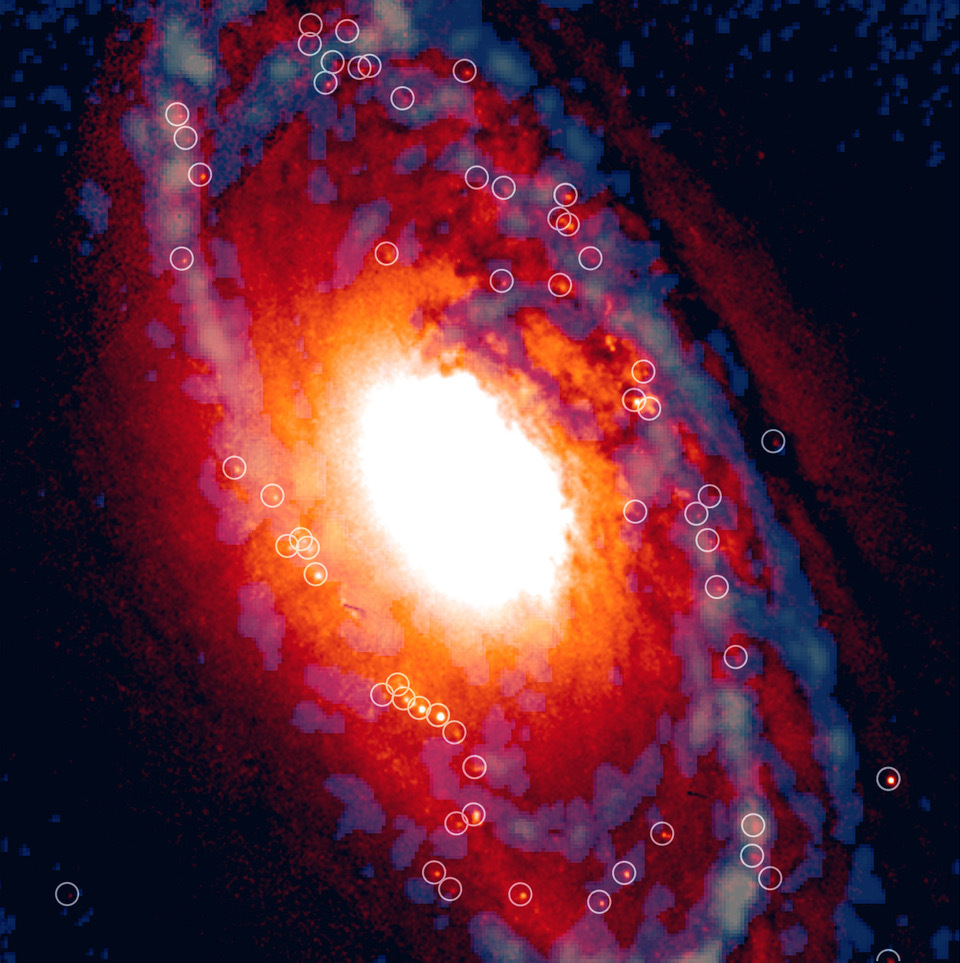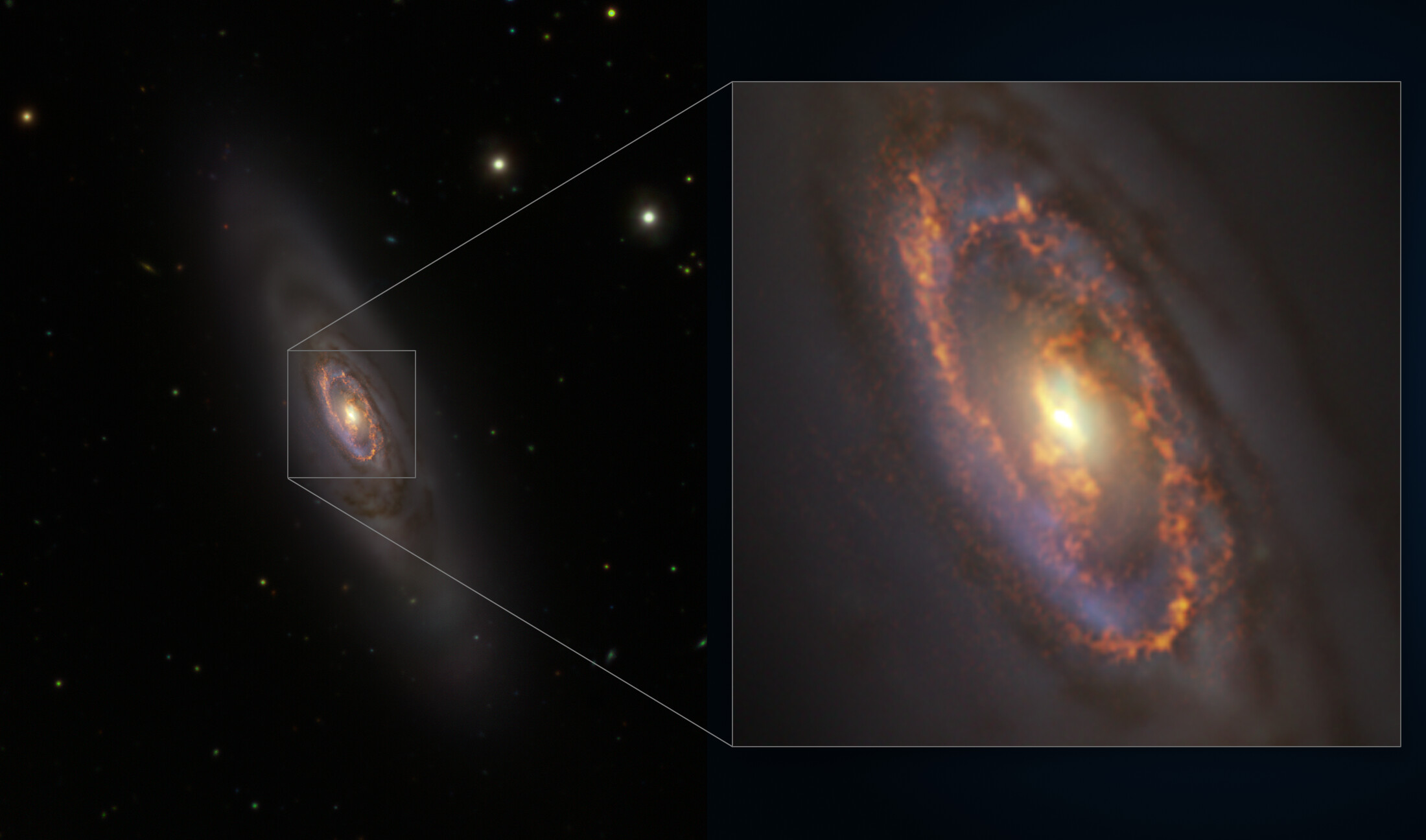The galaxy NGC 1386 is forming new stars in a ring around its center, despite being an old galaxy with no material to form new stars there. New radio observations suggest that the galaxy takes material from its outer regions to form stars near its center on a recurring basis.
In this new study, published in Monthly Notices of the Royal Astronomical Society, data in visible and infrared light from the Hubble Space Telescope (HST) and the Very Large Telescope (VLT) were used, along with radio data from the ALMA observatory. Gustavo Bruzual from the Institute of Radio Astronomy and Astrophysics (IRyA) at UNAM, Campus Morelia, was a coauthor.
The astronomers detected 61 young star clusters in NGC 1386, regions where the galaxy has recently formed stars, using data from the HST and VLT telescopes. “All these clusters appear distributed like small pearls in a ring around the center of the galaxy. We estimate that they formed at the same time in a synchronized event, approximately 4 million years ago,” explained Almudena Prieto, researcher at the Instituto de Astrofísica de Canarias (Spain) and first author of the study.
By adding radio observations, the team captured how the galaxy carries material in long filaments of dust and molecular gas from its outer regions to its center, where new stars are formed. “These filaments are seen directly in our high angular resolution dust maps obtained with the VLT and the HST, as dark fingers, and in our ALMA image, as bright filaments,” added Prieto.
This flow of material may also feed the supermassive black hole at the center of this galaxy, likely responsible for its previously observed moderate nuclear activity.
The ALMA data also suggest that this galaxy could have a new episode of new star formation around its center in the future. “We detected a second ring of about 70 molecular clouds around the ring of star clusters, so we expect a new synchronized star formation event in about 5 million years,” concluded the author of the study.

Image
The image shows the central region of the galaxy NGC 1386, observed with the Hubble Space Telescope (in warm colors), showing the light from the stars of this galaxy, including a ring of young star clusters marked with white circles. Regions where no starlight is observed are also visible, in black. Superimposed, in semi-transparent blue, is the image in radio waves obtained by the ALMA observatory, which shows the filaments of gas composed of simple molecules, traced by the emission of carbon monoxide, filling the gaps left by the starlight, and forming a ring that surrounds the ring of young star clusters. The team of this work proposes that these filaments carry material from the outskirts of the galaxy to feed the supermassive black hole at its center and the formation of new stars around it. Credit: HST/ ALMA; A. Prieto et al. Composition: Gabriel Pérez Díaz (SMM, IAC)
Top Image
Composition of visible light and radio wave images obtained respectively by the VLT Survey Telescope (VST) and the ALMA radio observatory, both located in Chile. Young stellar clusters formed about 4 million years ago are observed in blue, while molecular gas clouds are seen in warm, bright colors, from which new stars will be born in about 5 million years. Credit: ESO/ALMA (ESO/NAOJ/NRAO)/A. Prieto et al./Fornax Deep Survey.
Research paper
The PARSEC view of star formation in galaxy centres: from protoclusters to star clusters in an early-type spiral
Almudena Prieto, C. Gladis Magris, Gustavo Bruzual, Juan A. Fernández-Ontiveros, Andreas Burkert
Monthly Notices of the Royal Astronomical Society, 533, 1, 433
https://doi.org/10.1093/mnras/stae1822
Gustavo Bruzual’s Career
Dr. Gustavo Bruzual did his undergraduate studies in physics at the Central University of Venezuela and the National Autonomous University of Mexico (UNAM), and obtained his PhD from the University of California, Berkeley. After a long career at the Fundación Centro de Investigaciones de Astronomía (CIDA) in Venezuela, of which he was Director for 21 years, he has been a researcher at the UNAM since 2010.
His research on stellar population synthesis is internationally renowned and his work is the main reference in this field. His models of the spectral evolution of galaxies enable the physical properties of these objects, including the stellar mass, to be found. He is a member of several international academies of science, including The World Academy of Sciences (TWAS), the Mexican Academy of Science, and in 1991 he was elected associate of the Royal Astronomical Society in recognition of his leadership in astronomy.
About IRyA, UNAM
The Instituto de Radioastronomía y Astrofísica (IRyA), or Institute for Radioastronomy and Astrophysics is an academic unit at UNAM, Campus Morelia, Mexico. The Institute’s personnel perform high-level and high-impact research in the areas of interstellar medium, star formation, evolved stars, high energy astrophysics, Galactic dynamics and structure, extragalactic astronomy and cosmology. They also contribute to educate high-level human resources through a postgraduate program, and maintain a close relationship with society through diverse outreach and science communication programs.
If you are interested in our Institute, visit the English version of our webpage, www.irya.unam.mx/web/en
Media contact:
Dr. René A. Ortega Minakata
Outreach and Science Communication
IRyA UNAM Campus Morelia
Text: IRyA UNAM, based on the note by the Instituto de Astrofísica de Canarias (IAC):
https://www.iac.es/en/outreach/news/regions-where-extremely-young-stars-are-forming-have-been-found-very-old-galaxies





